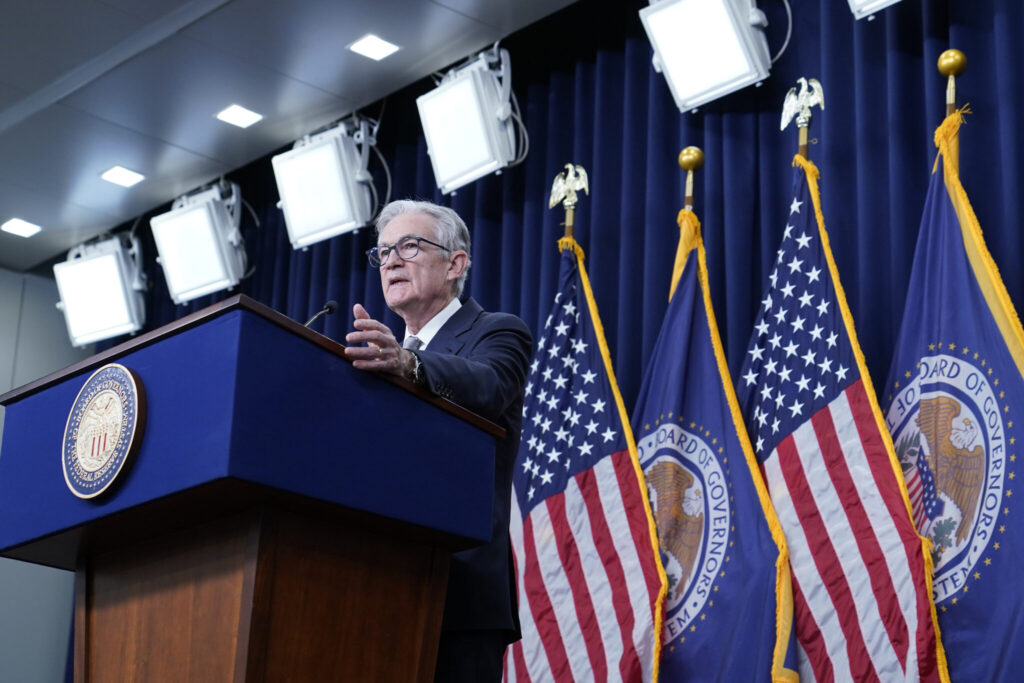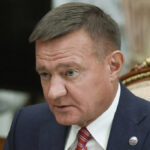The Federal Reserve held interest rates steady on Wednesday and signaled in new economic projections that the historic tightening of U.S. monetary policy engineered over the last two years is at an end and lower borrowing costs are coming in 2024. In a new policy statement, U.S. central bank officials took explicit account of the fact that inflation “has eased over the past year,” and said it would watch the economy to see if “any” additional rate hikes are needed – implying directly that, after months of aggressive tightening and a bias towards moving rates higher, they may not need to move higher again.
Quick Read
- Interest Rate Unchanged: The Federal Reserve maintained its key interest rate at about 5.4%, marking the third consecutive time it has kept the rate steady. This level is the highest in 22 years.
- Future Rate Cuts: The Fed signaled plans for three quarter-point cuts in 2024, less than the five cuts anticipated by financial markets and some economists. These cuts may not start until the second half of the year, indicating that high borrowing rates will likely persist through most of 2024.
- Inflation Status: The Fed acknowledged that inflation has eased over the past year but remains high. This is the first formal recognition of progress in combating inflation since it spiked.
- Rate Hike Consideration: The central bank is contemplating whether any additional rate hikes are necessary, suggesting that its efforts to raise rates may be concluding.
- Economic Impact of High Rates: The high benchmark rate has increased the cost of mortgages, auto loans, business borrowing, and other forms of credit, leading to decreased spending in these areas.
- Inflation and Economy Balance: Inflation has declined faster than expected without a surge in unemployment or a recession, a scenario few anticipated a year ago. However, inflation is still above the Fed’s 2% target.
- Persistent High Inflation in Some Areas: Inflation remains high in sectors like health care, apartment rents, and restaurant meals, causing Fed Chair Jerome Powell to be cautious about signaling rate cuts.
- Economic Projections: The Fed envisions a “soft landing” for the economy, with inflation continuing to move towards the 2% target without causing a significant downturn. Officials expect to reduce the benchmark rate to 4.6% by the end of 2024.
- Conditions for Faster Rate Reductions: A sharp economic slowdown could lead to quicker rate cuts, though there are currently no signs of an imminent downturn.
- Potential Effects of Rate Cuts: Reduced rates would lower borrowing costs and could boost stock prices, although market anticipation of rate cuts may limit further increases.
- Powell’s Stance on Rate Reductions: Powell has downplayed the likelihood of imminent rate reductions and has not indicated that the Fed is finished with rate hikes.
- Inflation and Interest Rates: If inflation continues to fall, it could effectively raise real interest rates, prompting the Fed to cut rates to prevent borrowing costs from becoming higher than intended.
- Recent Economic Data: Data showing a low unemployment rate and modest changes in consumer prices have tempered market expectations for early rate cuts.
- International Central Bank Decisions: The Fed’s decision precedes meetings of other major central banks, including the European Central Bank and the Bank of England, which are also expected to hold rates steady.
The Associated Press has the story:
Federal Reserve keeps key interest rate unchanged, foresees 3 rate cuts next year
Newslooks- WASHINGTON (AP)
The Federal Reserve kept its key interest rate unchanged Wednesday for a third straight time, a sign that it is likely done raising rates after having imposed the fastest string of increases in four decades to fight painfully high inflation.
The Fed’s policymakers also signaled that they expect to make three quarter-point cuts to their benchmark interest rate next year, fewer than the five envisioned by financial markets and some economists. The relatively few number of rate cuts forecast for 2024 — which may not begin until the second half of the year — suggest that the officials think high borrowing rates will still be needed for most of next year to further slow spending and inflation.
Still, in a statement it issued after its 19-member policy committee met Wednesday, the Fed said that “inflation has eased over the past year, but remains elevated.” It was the first time since inflation first spiked that the Fed has formally acknowledged progress in its fight against accelerating prices. The central bank also provided a hint that its rate cut efforts may be over, saying it is now considering whether “any additional” hikes are needed.

The Fed kept its benchmark rate at about 5.4%, its highest level in 22 years, a rate that has led to much higher costs for mortgages, auto loans, business borrowing and many other forms of credit. Higher mortgage rates have sharply reduced home sales. Spending on appliances and other expensive goods that people often buy on credit has also declined.
So far, the Fed has achieved what few observers had thought possible a year ago: Inflation has tumbled without an accompanying surge in unemployment or a recession, which typically coincide with a central bank’s efforts to cool the economy and curb inflation. Though inflation remains above the Fed’s 2% target, it has declined faster than Fed officials had expected, allowing them to keep rates unchanged and wait to see if price increases continue to ease.
At the same time, the government’s latest report on consumer prices showed that inflation in some areas, particularly health care, apartment rents, restaurant meals and other services, remains persistently high, one reason why Fed Chair Jerome Powell is reluctant to signal that policymakers are prepared to cut rates anytime soon.
On Wednesday, the Fed’s quarterly economic projections showed that its officials envision a “soft landing” for the economy, in which inflation would continue its decline toward the central bank’s 2% target without causing a steep downturn. The forecasts showed that the policymakers expect to cut their benchmark rate to 4.6% by the end of 2024 — three quarter-point reductions from its current level.
A sharp economic slowdown could prompt even faster rate reductions. So far, though, there is no sign that a downturn is imminent.
Rate cuts by the Fed would reduce borrowing costs across the economy. Stock prices could rise, too, though share prices have already rallied in expectation of rate cuts, potentially limiting any further increases.
Powell, though, has recently downplayed the idea that rate reductions are nearing. He hasn’t yet even signaled that the Fed is conclusively done with its hikes.
One reason the Fed might be able to cut rates next year, even if the economy plows ahead, would be if inflation kept falling, as expected. A steady slowdown in price increases would have the effect of raising inflation-adjusted interest rates, thereby making borrowing costs higher than the Fed intends. Reducing rates, in this scenario, would simply keep inflation-adjusted borrowing costs from rising.
Recent economic data have modestly cooled financial markets’ expectations for early rate cuts. Last week’s jobs report for November showed that the unemployment rate fell to 3.7%, near a half-century low, down from 3.9% as businesses engaged in solid hiring. Such a low unemployment rate could force companies to keep raising pay to find and retain workers, which would fuel inflationary pressures.
And consumer prices were mostly unchanged last month, the government said Tuesday, suggesting that while inflation is likely headed back to the Fed’s 2% target, it might take longer than optimists expect. The central bank, as a result, could opt to keep rates at their current level to try to ensure that prices resume their downward path.The Fed is the first of several major central banks to meet this week, with others also expected to keep their rates on hold. Both the European Central Bank and the Bank of England will decide on their next moves Thursday.






